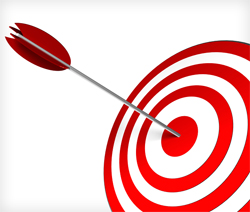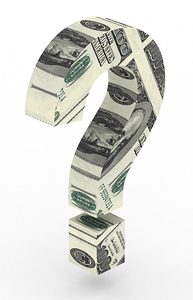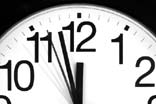Get An Apples-to-Apples Cost Comparison on Your Tradeshow Exhibit
Thinking About Changing Exhibit Companies?
Feel like your current tradeshow exhibit service company is holding you hostage? Are you getting the level of service you deserve at a reasonable cost? Is it time to look into a new provider? The most common way to start this process is to do some research, contact a few companies, and request some proposals. The problem, however, is that when the proposals come in, none of them end up looking alike. How are you to compare?
 When looking for a new tradeshow booth or services provider it is important to seek out “apples-to-apples” pricing: competitive quotations that are all including the same types of services.
When looking for a new tradeshow booth or services provider it is important to seek out “apples-to-apples” pricing: competitive quotations that are all including the same types of services.
Request an Apples-to-Apples Quotation
There are many different ways a tradeshow exhibit services company can write a quote, which can make comparing them difficult. Also, depending on the company you are dealing with, there can also be many different ways to hide costs that come after everything is said and done. It is important to make sure that all of the quotes you are comparing include everything you need. Otherwise, you may choose what looked to be the most inexpensive quote, but when your tradeshow ends, you can find yourself looking at an invoice with thousands of dollars you were not expecting to have to pay.
The best way to make sure that you are getting an apples-to-apples quotation is by sending companies a format for their proposals. All you have to do is take a current tradeshow exhibit services invoice and copy the descriptions of each line item and ask prospective vendors to fill in their prices for the same items. This way they know exactly what services to price and the final product will be quotations that you can easily compare. You can also learn a great deal about each bidder by seeing how willing they are to participate and how well they follow your directions.
Once you have the numbers, make sure to review each proposal for disclaimers and fine print. Once you’ve narrowed the field, interview each company that is being seriously considered and check their references.
These kinds of apples-to-apples quotations will save you time, and quite possibly a great deal of money.
A Perfect Tradeshow Vendor Relationship
Finding the perfect vendor to support your tradeshow program can be challenging, and there is no one-size-fits-all solution, but with the right things in mind, you can hit your target. As with any other decision, the preparation you put into it will greatly affect your level of success.
 Typically, the decision for an exhibit supplier is made during the purchase of a new display. It may seem logical that the company that built the display would be the best choice to manage it. Sometimes that may be true, but often the problem is that the companies that do the best job of design and presentation are not always the best at program management. Their company’s focus might be on designing and building new exhibits, leaving program management to take a back seat.
Typically, the decision for an exhibit supplier is made during the purchase of a new display. It may seem logical that the company that built the display would be the best choice to manage it. Sometimes that may be true, but often the problem is that the companies that do the best job of design and presentation are not always the best at program management. Their company’s focus might be on designing and building new exhibits, leaving program management to take a back seat.
A good start in your search is determining how much help you will need, and the size of your program:
- Pharmaceutical companies might exhibit in over 100 shows per year, not including other events that are a large part of their face to face marketing. Auto manufacturers exhibit in 65 or more shows in the span of a few months. These types of companies usually prefer to deal with the largest exhibit companies.
- Companies that participate in fewer shows each year in smaller configurations may not get the level of service that they need from a huge exhibit company, and often end up being the proverbial “small fish in a big pond.”
In order to find the best match for your needs, give some thought to how much support you will need from your exhibit company. Some companies need only basic assistance, such as storage, preparation and minor repairs. Others rely more heavily on an exhibit company to handle the entire show including show services, graphic design, shipping, etc. Be sure to consider how important your scale of business will be to your new vendor and whether you will have access to senior management in the event that problems occur.
While experience in your specific industry is a valuable thing, use caution in looking for a company that has several other clients in your most important show, as you may find that they are stretched too thin to provide the best service. Also, there are many other factors that contribute to the success of a vendor/client relationship, but a vendor’s efforts to become the best partner should always involve a willingness to listen and adapt to the client’s preferred ways of doing business.
Are you considering changing tradeshow vendors? Let’s Talk.
Do Tradeshow Logistical Costs Influence the Decision to Exhibit?
In difficult economic times, companies look closely at every expense.
 When money is tight, they must decide whether it is still wise to allocate resources to areas that may have been a “no-brainer” in stronger markets. Naturally, marketing expenses are no exception, and trade show exhibiting can be a large portion of many companies’ marketing budgets. The cost of logistics for tradeshow exhibiting (freight, drayage, setup, electrical, etc.) can be substantial. As a result, it will almost certainly be a candidate for the chopping block when executives start cutting back.
When money is tight, they must decide whether it is still wise to allocate resources to areas that may have been a “no-brainer” in stronger markets. Naturally, marketing expenses are no exception, and trade show exhibiting can be a large portion of many companies’ marketing budgets. The cost of logistics for tradeshow exhibiting (freight, drayage, setup, electrical, etc.) can be substantial. As a result, it will almost certainly be a candidate for the chopping block when executives start cutting back.
However, the decision to exhibit in a show is seldom based entirely on logistical costs. As long as advertised attendance figures are favorable, and the following items are true of a show, a company will find the funds to exhibit.
- The company has something to show it’s customers, both current and potential.
- Their competitors will be attending.
- Their biggest customers will be attending.
They may scale back their exhibit space, look at alternative ways to make a presence, or just complain about having to spend the money, but one way or another, they’ll be there. It’s a difficult reality, but in business, perception is important. When a company doesn’t attend a major show, the first thing attendees think is that they must be either in dire straits financially, or that they had nothing to show, and therefore are not worth considering as a vendor. Companies must carefully consider all the potential areas of impact before deciding not to attend a show.
Looking for areas to trim your tradeshow exhibiting budget? Let’s Talk.
Trade Show Planning: Creating a Timeline
Organizing your company’s participation in upcoming trade shows can be stressful and requires precision and strong organizational skills. To make it a tad less stressful, prepare a timeline of things that must get done and when they must be accomplished.  This alone can help you stay on track, reduce some of the nail-biting and prevent missed deadlines that can cost you down the road in lost discounts, rush fees and missed opportunities.
This alone can help you stay on track, reduce some of the nail-biting and prevent missed deadlines that can cost you down the road in lost discounts, rush fees and missed opportunities.
There are deadlines for choosing an exhibit space, for ordering show services, and for creating your exhibit. There is no one right way to create a timeline, as they can be organized in a myriad of ways (deadlines, tasks, etc.). However, once you come up with one that works for you, use it as a master template for creating timelines for all future shows.
Here are some general guidelines to help you in your planning:
12+ months out: Determine your objectives
Identify the role that trade shows will play in your overall marketing and sales plan. Will trade shows be primarily used to generate sales leads and prospective customers?
Conduct research on what shows will best achieve these objectives.
Determine a budget and project your return on investment (ROI).
9-12 months out: Initial planning mode
Compile a list of specific objectives for each show, such as number of leads, number of products sold, amount of publicity sought, etc.
Identify the booth size needed and type of display, along with marketing collateral and promotional items.
Register for the show and reserve your space with show management and request full details of exhibit requirements (deadlines, shipping information, etc.).
Create a trade show marketing plan that uses a mix of promotional methods to reach sales prospects.
6-9 months out: Fine-tuning your message
Develop your sales message that will communicate a compelling story and deliver the key points you want to make in as short a time as possible (preferably less than 30 seconds).
Choose an exhibit company to help create and deliver an exhibit that will fit your needs and budget. Research their capabilities, experience, and design talent, and be sure and check references of past clients.
Determine what promotional strategies, such as giveaways and attractions, you’ll use to draw attendees out of crowded aisles and into your booth.
4-6 months out: Tying up loose ends
Order promotional items (giveaways, takeaways, prizes, etc.)
Confirm delivery dates with your exhibit company to assure your display will be ready on time.
Determine who will be staffing your booth at the show, develop schedules, and plan training sessions.
Make travel and hotel reservations, if you haven’t already.
Determine how your exhibit and accessories will be shipped to the show.
Launch pre-show marketing initiatives.
1-3 months out: Check and double check details
Assemble packets of information for post-show marketing follow-up.
Contact show management for any last-minute details, changes, etc.
Finalize production of display, promotional items, and marketing materials and confirm shipping date.
Schedule dinners, briefings, or other meetings with customers, media, or sales staff.
Re-confirm hotel and travel arrangements. Last minute snafus are costly and can be eliminated by doing one last review of all your staff’s travel plans.
One week out: Crunch time.
Wrap up staff training of booth personnel.
Confirm shipping arrival dates for your display, marketing materials and promotional items.
There’s always going to be that one thing that completely slips your mind, however, having a timeline can help you stay focused, and more importantly, stay on schedule.
Goal Setting – How to Evaluate a Successful Tradeshow
As corporate tradeshow marketing professionals, justifying participation in trade shows is one of the most daunting tasks that we face. The competition for every penny of your marketing budget is fierce and very few executives are in love with tradeshows.
 How can you convince others in your organization that shows are a good investment? How can you say that you had a successful show when there was never any measurement technique established? Like any other investment, it must start with goals. When the decision is made to exhibit in a show, you and your team need to produce a written set of measurable goals that everyone buys into.
How can you convince others in your organization that shows are a good investment? How can you say that you had a successful show when there was never any measurement technique established? Like any other investment, it must start with goals. When the decision is made to exhibit in a show, you and your team need to produce a written set of measurable goals that everyone buys into.
These may include a number of completed lead sheets, meetings with certain key prospects, the number of individual demonstrations, etc. This list, created well before the show provides a very effective guide for exhibit design, graphics, booth staffing and show activities. Everything planned for the tradeshow must be done with your goals list in mind.
During the show, you can assemble the data to report which goals were achieved and which were not.
A team meeting 2 weeks after the show will allow you to share your results and will clearly demonstrate the value of the show. This then becomes a procedure that is done for every event.
A lack of goals leaves the future of your tradeshow program totally to chance. Need help establishing your goals? Our exhibit management is based entirely on strategic planning. Let’s Talk.
Chasing Tradeshow Cost Savings?
Many exhibitors are being forced to find ways to reduce the cost of participation in tradeshows. The most common way this task is approached is to look at each cost line item and see what can be done to save money.

The common first step is to contract for a smaller booth space. This not only saves on the cost of the space rental but also provides an across-the-board cost reduction. The downside of such a reduction? You may have to settle for a less than desirable booth location and you’ll also need to make sure your display properties will fit in the smaller format.
After booth space, the likely second step is to look at each cost category for the show and try to determine which costs can be reduced. This is a very time-consuming process, and usually entails trying to find out how much your exhibit weighs and how long it should take to set up. This information is not always easy to get your hands on, and when you do, there are always a slew of variables that can affect the final cost of the show.
In my opinion, however, the best first step to take is to contact your exhibit supplier (assuming they store and manage your display) and lay your cards on the table. Explain to them that you have been asked to cut 25% off the cost of last year’s show. Ask them to provide recommendations. Remember, they do this for a living! They are not likely to be overly excited about this mission, but they should support you through good times and bad.
If they can’t or won’t provide you with some good ideas, you should probably consider finding another supplier.
Thinking about changing exhibit companies? Let’s Talk.
Exhibit Acronyms – What is a Trade Show RFP?
RFP is an Acronym for Request for Proposal
 This is one of the few tradeshow exhibit industry terms that is also pretty common in other areas of business. In a nutshell, it means that your company has a need to buy products or services and you’d like to invite prospective vendors to submit proposals. RFPs can be sent out for something as simple as a rental backwall display or as elaborate as complete multi-year management of a hundred shows per year tradeshow program.
This is one of the few tradeshow exhibit industry terms that is also pretty common in other areas of business. In a nutshell, it means that your company has a need to buy products or services and you’d like to invite prospective vendors to submit proposals. RFPs can be sent out for something as simple as a rental backwall display or as elaborate as complete multi-year management of a hundred shows per year tradeshow program.
Once received, evaluation of submitted proposals can be difficult and time-consuming. As such, the number of companies that you invite should be limited to 3 – 5.
The basic RFP format is to provide:
- An overview of your company.
- A summary of your needs.
- An outline of how and when proposals should be submitted.
In order to make the process as efficient as possible, it is best to provide information that is concise. The key to dealing with responses in a timely fashion is to direct submissions so they are as similar in format as possible.
If you intend to request custom exhibit designs from bidders, keep in mind that designs are presented in a variety of formats from renderings mounted on boards to web-based video productions. You should clearly communicate the presentation format you prefer. When requesting designs, providing a budget number will make the final evaluation process much more productive.
You should also provide a format for the cost portion of the proposals. This can be in the form of a spreadsheet included in your RFP to be filled out and returned, or even as simple as an itemized list. Including this information helps to clearly describe what cost elements are to be included in the proposal. Things like carpet, electrical service, vacuuming, floral or technical support are not always part of the RFP process.
The bottom line? Give prospective vendors enough information to put together a proposal that is complete and in a format that makes it easy to compare. Time spent editing and refining your RFP documents can result not only in significant time savings when the time comes to review submissions, but also more quality in responses.
Need Exhibit Management for your trade show? We are ready to earn your business. Let’s talk.
EXHIBIT ACRONYMS – What does an EAC Provide at a Trade Show?
Exhibitor Appointed Contractor is a Company or Individual that Works on the Tradeshow Floor
The letters EAC is one of the thousands of acronyms that can seem to exist only to confuse people with less than 5 years of experience in the tradeshow business. EAC stands for Exhibitor Appointed Contractor.
 An Exhibitor Appointed Contractor is a company or individual that works on the tradeshow floor providing any of a number of services that could also be ordered from the General Services Contractor. (Freeman, GES, etc.) There are a few services for which you may prefer to use someone other than the General Services Contractor (GSC) such as installation and dismantling labor, audio visual rentals and service, floral, etc.
An Exhibitor Appointed Contractor is a company or individual that works on the tradeshow floor providing any of a number of services that could also be ordered from the General Services Contractor. (Freeman, GES, etc.) There are a few services for which you may prefer to use someone other than the General Services Contractor (GSC) such as installation and dismantling labor, audio visual rentals and service, floral, etc.
If you choose to use an EAC, you must notify the show well in advance to allow them time to make sure your selected company is properly certified and insured. The form for this notification is in the show manual. Be sure to find the form and get it sent in as soon as you are able since the show generally requires at least 30 days notice.
The most common service provided by an EAC is installation and dismantling labor. A large number of companies of all sizes are anxious to provide you with labor services. These companies claim to provide better quality labor and service than the GSC at a competitive price. They will also help you with filing the EAC form. Be sure to get their information in writing and check references just like you would with any of your vendors.
Installation and Dismantling of Your Tradeshow Exhibit Should be done by an EAC or GSC
There are some services that are provided only by the convention center or GSC such as material handling, electrical service and labor, rigging, vacuuming, plumbing, etc. Many exhibitors feel that this exclusivity allows the GSC to charge inflated rates or provide inferior labor, but for most of these services, there are good reasons for the rules. In the case of material handling or drayage, there must be only one exhibit management company organizing everything, both to keep order and for safety reasons. Electrical labor and service must be done according to the contract with the convention center and local building codes for public safety.
No matter who you choose to provide your needed services on the show floor, as a first step, you need to spend some time reading the show manual to understand each service and to know the rules and your rights. Need help? Let’s Talk.
Determine Trade Show Value with the 2 Minute Challenge
As tradeshow exhibit professionals, we are constantly faced with justifying the value of participating in shows. The cost of exhibiting, the travel, diminishing show attendance, and the economy have turned up the heat.
 One basic test that helps me answer these challenges is to pose a simple question to any bottom line accountable executive. The question: if you were given 2 minutes to explain the advantages of dealing with your company to a person who regularly buys the same products and services from a competitor, do you think that you could convince them to give your company a try?
One basic test that helps me answer these challenges is to pose a simple question to any bottom line accountable executive. The question: if you were given 2 minutes to explain the advantages of dealing with your company to a person who regularly buys the same products and services from a competitor, do you think that you could convince them to give your company a try?
If the answer to this question is no, perhaps they should consider working for the competitor or at least reexamining your product or service offering.
Most confident executives would gladly accept this challenge. The best place to set the stage for this scenario is at a tradeshow or convention. Couple this amazing opportunity with the fact that the buyer has paid their own way to the show and that they are receptive to this pitch in the show environment and you can easily see the value proposition that tradeshows create.
The clients that I have worked with over the years that have the most success at shows have enlisted the help of a tradeshow pro to put together an integrated tradeshow marketing plan that will result in producing the maximum number of these opportunities. Our exhibit management program focuses on producing successful shows with minimum stress and maximum value. Our on-site trade show specialists are there the entire time, from set-up to tear-down – Let’s Talk.
Trade Show Preparation Checklist
Things to do before leaving for a trade show
Create a trade show project timeline. Take a look at the show exhibitor manual that is available online. Many show manuals include a chronological list of deadlines that make an excellent starting point for your personalized project timeline. Things that you may add to this list include: preparation and shipment of your products and literature, making your travel arrangements, hotel accommodations for your staff, making arrangements for activities, dinners, etc. during the show.

- Make a folder or binder to contain all of the confirmations and show services forms that you have submitted.
- Create a list of important telephone numbers. These are specific to each show. This can be done electronically or manually but should be something that you have with you at all times in the trade show city.
- Check the weather in the trade show city. Make sure that you bring the right clothes for the climate and keep in mind that the convention center might not be heated or air conditioned during installation and dismantling.
- Take a good digital camera to document things. Cell phone cameras are getting better but the best results can be expected if you use a decent quality portable digital camera. You will want to photograph your display to reference for future show planning. You may need to document damage to items during shipment. You may wish to take some shots of competitors’ displays or other exhibits that you find attractive.
- Plan how you will evaluate the show and collect the necessary information.
- Make sure that your booth staffers are aware of the show hours and when they are to work the booth.
- Plan a booth staff orientation meeting in the booth before the show opens on the first day to make everything work smoothly.
- Think about dismantle. Where and how are your materials being shipped after the show? Have labels and paperwork filled out to eliminate unnecessary confusion during dismantle.
- Leave yourself sufficient time to catch your plane. Dismantle will go much better if you are not in a rush to get to the airport.
Do you need trade show help? Click here for a list of services Alexis Exhibits provides to make sure everything goes according to plan.
Good luck with the show!
Archives
- July 2021
- June 2021
- May 2021
- April 2021
- October 2018
- September 2018
- August 2018
- July 2018
- June 2018
- May 2018
- April 2018
- March 2018
- February 2018
- January 2018
- December 2017
- November 2017
- October 2017
- September 2017
- August 2017
- July 2017
- June 2017
- May 2017
- April 2017
- March 2017
- February 2017
- January 2017
- December 2016
- November 2016
- October 2016
- September 2016
- August 2016
- July 2016
- June 2016
- May 2016
- April 2016
- March 2016
